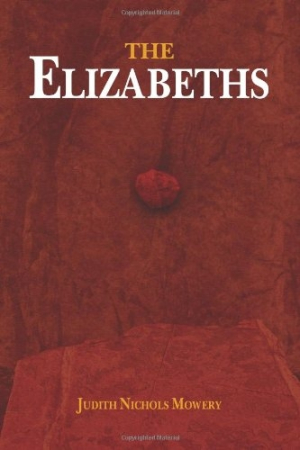The Elizabeths
Spies and spirits occupy the same shape-shifting space in Judith Nichols Mowery’s magical novel, The Elizabeths. Mowery explores the boundaries of personal identity and the possibility of parallel lives through the intriguing stories of Liz, Beth, and Eliza, who live on the same stretch of beach and yet exist in different dimensions. Mowery keeps readers guessing as each woman’s story unfolds to reveal threads ranging from murder investigations to international spy rings.
At first, the plot seems fairly ordinary: Liz runs on the sunlit shore near her oceanfront cabin as she awaits news from her traveling husband, Peter. Only a few pages in, however, the tone changes from domestic to dramatic as news arrives that changes Liz’s future in an instant. Meanwhile, earth-shattering revelations are also shaking the lives of Beth and Eliza. Mowery keeps their stories separate at first, carefully revealing the synchronicity at work in these women’s lives. She presents the reader with the same puzzle the three Elizabeths are trying to solve: How are their lives connected, and what does it mean?
Mowery uses mystical imagery to explore this connection—messages conveyed on beams of light, for instance—and yet her characters never question the appearance of the supernatural in their lives. They are fascinated and amazed, but never skeptical, in keeping with the conventions of magical realism. Mowery roots her characters’ experiences in reality, implying that what they are going through could happen to anyone. These women consider their predicament not around the séance table, but over a lunch of tuna sandwiches with brownies and milk.
Inner monologues reveal the thought processes of the women along with much of their family histories. The technique is jarring, especially when readers first encounter the quotation marks that denote thought rather than speech. It is easy to assume these women are talking to themselves aloud. Some of the ponderings are quite lengthy and include information the character surely already knows—how her family’s car accident occurred years earlier, or how she discovered her husband was cheating on her—and this makes such instances transparent only as devices for informing the reader.
Mechanical problems slow down the storytelling in some spots. Italicized comments may take the place of quotations in some instances, making it difficult to discern when a conversation has begun or when someone is lost in thought. Run-on sentences, possibly intended to create a sense of urgency, add to the confusion.
The concepts explored in The Elizabeths are fascinating in spite of any grammatical missteps. Through the eyes of Liz, Beth, and Eliza, readers are given the opportunity to consider the possibilities that arise when lives split off on parallel paths.
Reviewed by
Sheila M. Trask
Disclosure: This article is not an endorsement, but a review. The publisher of this book provided free copies of the book and paid a small fee to have their book reviewed by a professional reviewer. Foreword Reviews and Clarion Reviews make no guarantee that the publisher will receive a positive review. Foreword Magazine, Inc. is disclosing this in accordance with the Federal Trade Commission’s 16 CFR, Part 255.

